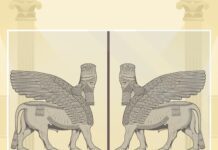Archaeologists working in Cueva de Ardales in southern Spain have dated red ochre pigments on stalagmites and walls to roughly 65,000 years ago, making them among the earliest pieces of art ever found.
If the measurements hold, the markings pre-date the arrival of Homo sapiens in the Iberian Peninsula. That means Neanderthals, long portrayed as pragmatic hunters, might have been painters too.
The finding adds to a series of discoveries across Spain at La Pasiega and Maltravieso that hint at Neanderthal symbolism. It challenges the neat timeline that once placed artistic awakening squarely within modern humanity.
The Illusion of Firsts
Yet the headline question, “Did Europe invent painting?” reveals more about our species than our ancestors. Archaeology often slips into the language of competition: the first tool, the first fire, the first word, the first art. But the urge to create was never a race.
Across Indonesia’s Sulawesi caves, narrative scenes showing human-like figures interacting with pigs date to 51,200 years ago.
In Borneo, ochre scenes of animals and humans may be equally ancient. On the African continent, perforated beads and engraved shells show symbolic thought tens of thousands of years earlier still.
What survived depends on climate, not creativity. Europe’s limestone caves are cool and stable; ochre on open rock in Africa or Asia eroded long ago. Perhaps the real story is not who began art, but where it endured.

Europe’s Caves as Mirrors
Standing inside a prehistoric cavern feels like meeting a reflection rather than an ancestor. The flicker of torchlight across painted rock shows that whoever lived there felt the same mix of fear, reverence, and imagination we do.
Europe’s caves became repositories before the word existed. They mirror humanity’s capacity to make meaning out of emptiness. But to call them origins risks repeating an old habit: confusing preservation with invention, geography with genius.
The first artists we can still see happened to live where stone and humidity kept their gestures intact. Countless others vanished into wind and sand.
The Meaning of Preservation
There is, however, something to celebrate in Europe’s role as caretaker.
These chambers survived ice ages and modern mining projects because people valued them enough to protect them. The careful dating work at Ardales shows how science and patience can preserve wonder without ownership.
It is worth honouring that diligence, without turning it into cultural pride. Discovery should invite stewardship, not superiority. Archives already struggle with the same tension: how to display global heritage without claiming it.
The caves remind us that finding something does not make it ours; it only makes us responsible for keeping it safe.
A Shared Inheritance
Art began wherever humans, or near-humans, had pigment, hands, and time to look at the world and want to leave a mark on it.
Every civilisation later developed its own style because resources, beliefs, and landscapes differed. To study those differences is fascinating; to rank them is meaningless.
Europe’s ancient painters were not Europeans in any modern sense. They were beings trying to understand light, shadow, and life. Their descendants are not nations but minds capable of awe.
When scientists brush dust off a wall in Andalusia or a rock in Sulawesi, they are not reopening a contest but continuing a conversation.
Lessons from the Oldest Gallery
If anything, the Ardales discovery reminds us how thin our definitions of culture can be. We tend to see history as progress, as if intelligence began at a single point and spread outward.
The truth looks more like a constellation: ideas appearing, fading, and reappearing wherever conditions allowed.
What joins those scattered sparks is not bloodline or continent, but the shared impulse to turn perception into permanence. So instead of declaring “Europe invented art,” perhaps we should say: Europe still holds a few of art’s earliest surviving traces.
They speak the same language as the painted pigs of Indonesia and the carved shells of Africa: a language of noticing, remembering, and belonging.
Keep up with Daily Euro Times for more updates!
Read also:
Spain’s War on Clocks: Time to End This Twice-Yearly Ritual?
Jurassic Justice: The Price of Time
The Case of a Missing Picasso: Europe’s Art World and the Fragility of Trust






